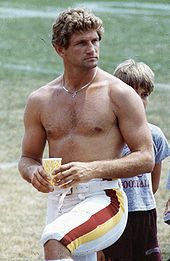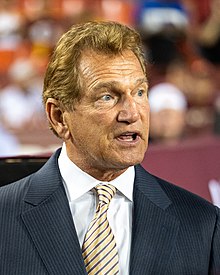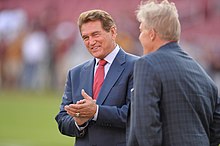
Super Bowl VII was an American football game between the American Football Conference (AFC) champion Miami Dolphins and the National Football Conference (NFC) champion Washington Redskins to decide the National Football League (NFL) champion for the 1972 season. The Dolphins defeated the Redskins by the score of 14–7, winning their first Super Bowl, and became the first and still the only team in modern NFL history to complete a perfect undefeated season. They also remain the only Super Bowl champion to win despite having been shut out in the second half of the game. The game was played on January 14, 1973, at the Los Angeles Memorial Coliseum in Los Angeles, the second time the Super Bowl was played in that city. At kickoff, the temperature was 84 °F (29 °C), making the game the warmest Super Bowl.

Super Bowl XVII was an American football game between the American Football Conference (AFC) champion Miami Dolphins and the National Football Conference (NFC) champion Washington Redskins to decide the National Football League (NFL) champion for the strike-shortened 1982 season. The Redskins defeated the Dolphins, 27–17, to win their first Super Bowl championship. The game was played on January 30, 1983, at the Rose Bowl in Pasadena, California.

Super Bowl XVIII was an American football game played on January 22, 1984, at Tampa Stadium between the National Football Conference (NFC) champion and defending Super Bowl XVII champion Washington Redskins and the American Football Conference (AFC) champion Los Angeles Raiders to determine the National Football League (NFL) champion for the 1983 season. The Raiders defeated the Redskins, 38–9. The Raiders' 38 points scored and 29-point margin of victory broke Super Bowl records; it remains the most points scored by an AFC team in a Super Bowl, later matched by the Kansas City Chiefs in Super Bowl LVII. This is the first time the city of Tampa hosted the Super Bowl and was the AFC's last Super Bowl win until Super Bowl XXXII, won by the Denver Broncos.

The Washington Commanders are a professional American football team based in the Washington metropolitan area. The Commanders compete in the National Football League (NFL) as a member of the National Football Conference (NFC) East division. The team plays its home games at Commanders Field in Landover, Maryland; its headquarters and training facility are in Ashburn, Virginia. The Commanders have played more than 1,300 games and is one of only seven in the NFL with more than 600 total wins. Washington was among the first NFL franchises with a fight song, "Hail to the Commanders", played by their marching band after every touchdown scored by Washington at home. The Commanders are owned by a group managed by Josh Harris, who acquired the franchise from Daniel Snyder in 2023 for $6.05 billion.

Joseph Clifford Montana Jr. is an American former football quarterback who played in the National Football League (NFL) for 16 seasons, primarily with the San Francisco 49ers. Nicknamed "Joe Cool" and "the Comeback Kid", Montana is widely regarded as one of the greatest quarterbacks of all time. After winning a national championship with the Notre Dame Fighting Irish, Montana began his NFL career in 1979 at San Francisco, where he played for the next 14 seasons. With the 49ers, Montana started and won four Super Bowls and was the first player to be named the Super Bowl Most Valuable Player (MVP) three times. He also holds Super Bowl career records for most passes without an interception and the all-time highest passer rating of 127.8. In 1993, Montana was traded to the Kansas City Chiefs, where he played for his last two seasons and led the franchise to its first AFC Championship Game. Montana was inducted to the Pro Football Hall of Fame in 2000.

James William Plunkett is an American former football quarterback who played in the National Football League (NFL) for 16 seasons. He achieved his greatest success during his final eight seasons with the Raiders franchise, whom he led to two Super Bowl wins.

Richard Joseph Gannon is an American former football quarterback who played 18 seasons in the National Football League (NFL). Subsequently, he was a sports commentator with CBS Sports for 16 years.

Christian Adolph "Sonny" Jurgensen III is an American former professional football player who was a quarterback in the National Football League (NFL) for 18 seasons, playing for the Philadelphia Eagles and Washington Redskins. He was inducted into the Pro Football Hall of Fame in 1983. Jurgensen was also a longtime color commentator for Washington's radio broadcast crew.

Clifford Lynn Dickey is an American former football quarterback who played in the National Football League (NFL) for 15 seasons, primarily with the Green Bay Packers. He played college football for the Kansas State Wildcats and was selected in the third round of the 1971 NFL draft by the Houston Oilers, where he spent his first five seasons. Dickey was a member of the Packers for his remaining 10 seasons, leading them in 1982 to their first playoff appearance since 1972 and victory since 1967. He also led the league in passing touchdowns during the 1983 season. For his accomplishments with the franchise, he was inducted to the Green Bay Packers Hall of Fame in 1992.
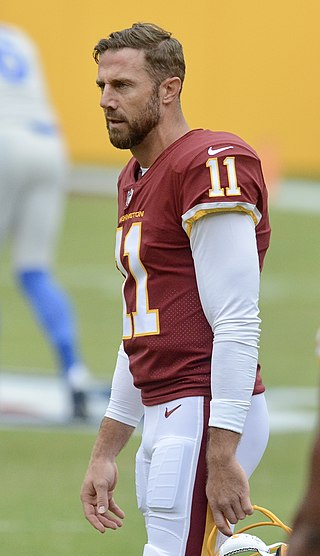
Alexander Douglas Smith is an American former football quarterback who played in the National Football League (NFL) for 16 seasons. Smith played college football for the Utah Utes, earning first-team All-American honors and winning the 2005 Fiesta Bowl as a senior. He was selected first overall by the San Francisco 49ers in the 2005 NFL draft.
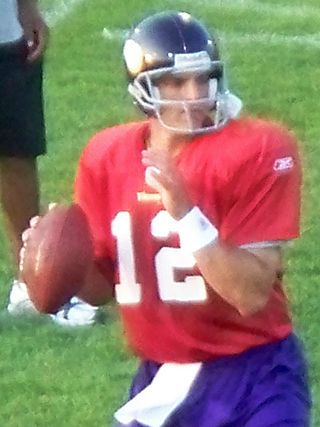
Gustave Joseph Frerotte is an American former professional football player who was a quarterback in the National Football League (NFL). He was selected by the Washington Redskins in the seventh round of the 1994 NFL draft. He played college football at Tulsa.
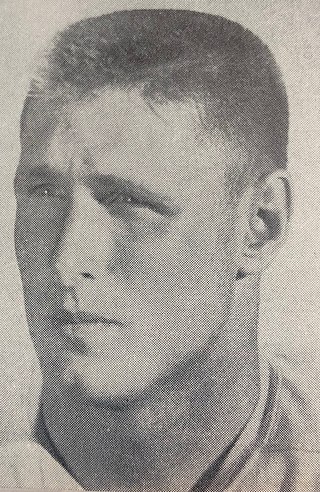
William Orland Kilmer Jr. is an American former professional football player who was a quarterback in the National Football League (NFL) for the San Francisco 49ers, New Orleans Saints, and Washington Redskins. He was also used as a running back and wide receiver. He played college football for the UCLA Bruins, then 18 seasons as a professional. In 1964, while playing running back for the 49ers, Kilmer played a supporting role in one of the most infamous incidents in gridiron history when Vikings defensive lineman Jim Marshall ran Kilmer's fumble back 66 yards into the wrong end zone.

The Washington Commanders are a professional American football franchise based in the Washington metropolitan area. They are members of the East division in the National Football Conference (NFC) of the National Football League (NFL). The Commanders were founded in 1932 as the Boston Braves, named after the local baseball franchise. The franchise changed its name the following year to the Redskins and moved to Washington, D.C. in 1937. In 2020, the team retired the Redskins name after longstanding controversies surrounding it and briefly became the Washington Football Team, before choosing the Washington Commanders as their permanent name in 2022.
Brigman P. Owens was an American professional football player who was a safety in the National Football League (NFL) for the Dallas Cowboys and Washington Redskins. He played college football at the University of Cincinnati.

Patrick Christian White is an American former football quarterback. He played professionally in the National Football League (NFL) and Canadian Football League (CFL). He played college football for the West Virginia Mountaineers and was selected by the Miami Dolphins in the second round of the 2009 NFL draft.

Jay Brian Schroeder is an American former professional football player who was a quarterback in the National Football League (NFL). He played college football for the UCLA Bruins, after which he was selected in the third round of the 1984 NFL draft by the Washington Redskins, where he played for four seasons. He then played for the Los Angeles Raiders for five seasons and spent one season each with the Cincinnati Bengals and Arizona Cardinals.
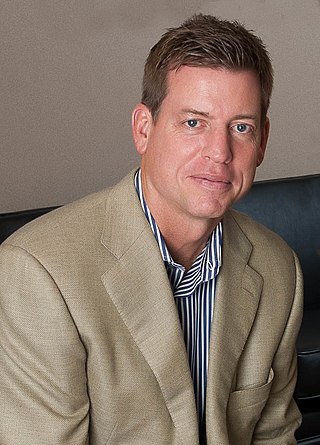
Troy Kenneth Aikman is an American former football quarterback who played in the National Football League (NFL) for 12 seasons with the Dallas Cowboys. After transferring from the Oklahoma Sooners, he played college football for the UCLA Bruins and won the Davey O'Brien Award as a senior. Aikman was selected first overall in the 1989 NFL draft by the Cowboys, with whom he received six Pro Bowl selections and won three Super Bowls. He was also named MVP of Super Bowl XXVII, the franchise's first title in over a decade. Aikman was inducted to the Pro Football Hall of Fame in 2006 and the College Football Hall of Fame in 2008.
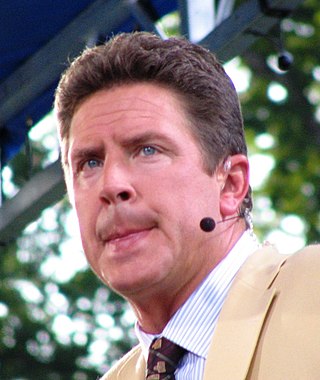
Daniel Constantine Marino Jr. is an American former football quarterback who played in the National Football League (NFL) for 17 seasons with the Miami Dolphins and currently works for the same team since 2014 as a special advisor. He played college football for the Pittsburgh Panthers, earning first-team All-American honors in 1981. Marino was the last quarterback taken in the first round of the famed quarterback class of 1983. He held or currently holds dozens of NFL records associated with the quarterback position, and despite never being on a Super Bowl-winning team, he is recognized among the greatest quarterbacks in American football history.

The 1984 Miami Dolphins season was the team's 19th season, and 15th in the National Football League (NFL). It was also the 15th season with the team for head coach Don Shula. The Dolphins sought to build on a spectacular 1983 season where they went 12–4 with rookie quarterback Dan Marino.
The 1985 New York Giants season was the franchise’s 61st season in the National Football League (NFL). The Giants entered the season looking to improve on their 9–7 record in 1984, which was enough to qualify the team for the playoffs as the second wild-card team, and to return to the playoffs for the second consecutive year under third-year head coach Bill Parcells. The Giants managed to do both, finishing with ten victories for the first time since 1963 when the team won eleven games and finishing as the first wild-card team which earned the Giants a home playoff game at Giants Stadium.

